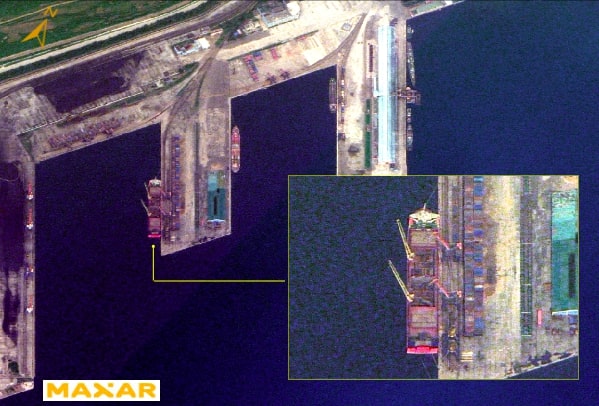South Korea’s National Intelligence Service (NIS) said it expects that a second phase of transport will occur soon.
South Korea’s National Intelligence Service (NIS) has said it has evidence that North Korean soldiers are being sent to Russia and are likely to be deployed to the front lines in Ukraine as soon as they complete acclimatization training.
The intelligence agency reported that in early August, it detected Kim Jeong-sik, a top North Korean official, visiting the KN-23 missile launch site near the Russia-Ukraine front several times, accompanied by military officers to provide guidance.
The NIS then closely monitored North Korean military movements and, on Oct. 18, said that in early October, it observed ships transporting 1,500 North Korean soldiers at a time to Vladivostok in Russia’s Far East.
Although the total number of soldiers being sent remains unclear, South Korean news agency Yonhap News said it could be up to 10,000 troops. The Epoch Times has not been able to independently verify this figure.
The NIS stated that photos and satellite imagery confirmed North Korean special forces’ involvement in the Ukraine–Russia war, with the first troop transfer conducted via Russian Pacific Fleet ships.
This marks the first entry of the Russian naval fleet into North Korean waters since 1990, the intelligence agency said.
It added that these troops were moved via four landing ships and three escort ships from areas near North Korean cities Chongjin and Hamhung and other North Korean sites to Vladivostok where they were issued Russian military uniforms and weapons.
Large transport aircraft, including AN-124s belonging to the Russian Air Force, have also been traveling between Vladivostok and Pyongyang, the agency said.
The NIS said it expects that a second phase of transport will occur soon and added that North Korea has been supplying ballistic missiles and other munitions to Russia.
On Friday, South Korean President Yoon Suk Yeol held an unscheduled security meeting with key intelligence, military, and national security officials to discuss the situation.
“The participants … shared the view that the current situation where Russia and North Korea’s closer ties have gone beyond the movement of military supplies to actual dispatch of troops is a grave security threat not only to our country but to the international community,” the government said in a statement.
On Oct. 17, Ukrainian President Volodymyr Zelenskyy said that he had intelligence that North Koreans were in Ukraine.
“We have information from our intelligence that … some officers of the North Korean army are already on Ukrainian territory temporarily occupied by the Russian enemies. So they joined the Russian army,” Zelenskyy told a press conference in Brussels.
“We know about 10,000 soldiers of North Korea, that they are preparing to send to fight against us,” he said, describing it as a “first step to the World War.”
NATO Secretary-General Mark Rutte said in a press conference alongside the Ukrainian leader on Oct. 17 that “we have no evidence that North Korean soldiers are involved in the fight.”
“We do know that North Korea is supporting Russia in many ways – by weapon supplies, technological supplies, innovation – to support them in the war effort, and that is highly worrying,” he said.
Russia and North Korea both deny they have engaged in arms transfers. The Kremlin has also dismissed South Korean claims that North Korea has sent military personnel to help Russia.

Last month, lawmakers in South Korea warned that Kim Jong Un is making progress in producing weapons-grade nuclear materials to develop more powerful and accurate bombs.
North Korea has likely enriched enough uranium to build a “double-digit” number of nuclear bombs, according to South Korea’s spy agency.
North Korea, formally the Democratic People’s Republic of Korea, a highly centralized totalitarian state, earlier this month unveiled via state media a secretive facility that produces uranium, a key material used in the development of nuclear weapons.
Satellite images captured by space technology company Maxar on Sept. 21 suggested that Russia had tested a Sarmat intercontinental ballistic missile which failed, according to arms experts.
The RS-28 Sarmat intercontinental ballistic missile, unofficially dubbed “Satan II” by NATO, is designed to deliver nuclear warheads to strike targets across vast distances.

